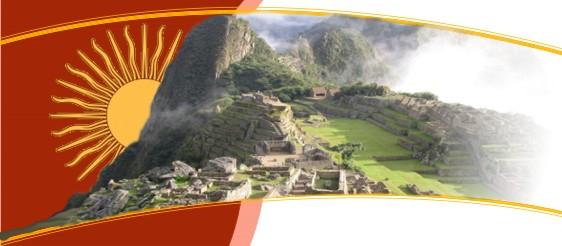The Native American heritage of Peru is one of the richest in South
America. Although Spain gave Peru its language, religion, and rulers,
the civilization of the Inca has left its traces throughout Peruvian
culture. Archaeological excavations have uncovered monumental remains of
Native American societies. Architecture of the Spanish colonial period,
a fusion of Spanish and Native American forms, is called Creole. In art
today, the indigenist school pointedly interprets 20th-century Peru in a
Native American mode. See also Latin American Architecture; Latin
American Literature; Latin American Music; Latin American Painting;
Latin American Sculpture.The descendants of the Quechua and Aymará
peoples populate the Andean highlands. Many do not speak Spanish and
have preserved the customs and folklore of their ancestors. Along the
coast and in the highland cities, the whites, mestizos, and blacks live
in a modern Western style. In contrast to these settlements are the
jungles of eastern Peru, where more isolated groups of Native Americans
retain lifestyles similar to those of their ancestors.
What to bring on your trip to Peru
in this
Peru
Weather Guide
Art and Architecture
Native American themes are strong in painting. During the colonial
period the Cuzco school was famous throughout Spanish America for its
religious canvases. During the 19th century there were four major
artists—Francisco Lazo, forerunner of the indigenous school of
painting and a portrait painter; Luis Montero, known for his huge canvas
Atahualpa's Funeral (1867); Pancho Fierro, a caricaturist of popular
social types and customs; and Carlos Becaflor, a portrait painter.In the
1930s, following the lead of the great Mexican muralists, a Peruvian
movement—led by José Sabogal and Julia Codesido—reflected deep
sympathy for the indigenous Peruvian people. Later, a reaction against
the use of native themes took place. In the 1950s abstract painting
became dominant. The Institute of Contemporary Art encourages new
movements in art, while the long-established National School of Fine
Arts is more conservative.In addition to the many monumental Inca ruins,
many examples of colonial architecture survive, particularly religious
and public buildings located mostly in Lima, Arequipa, Cuzco, and
Trujillo. In the Andean area the Spaniards often built on top of Inca
remains, and in Cuzco one can see both types of construction. In
colonial buildings, Spanish and indigenous modes often fuse, blending
into what was called the Creole style. Moorish influence, which traveled
from Arab North Africa to Spain and then to the Americas, is visible in
what is known as the Mudejar style. Lima has many examples of fine
modern architecture. |
